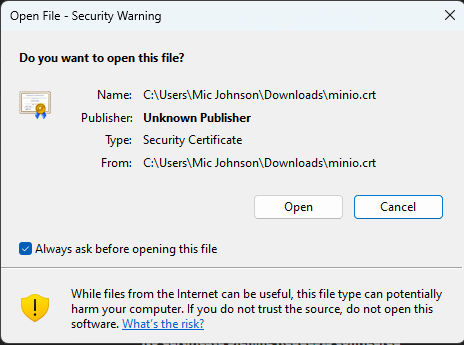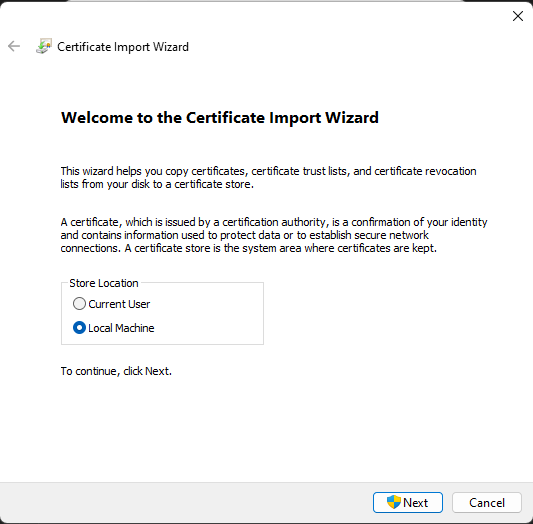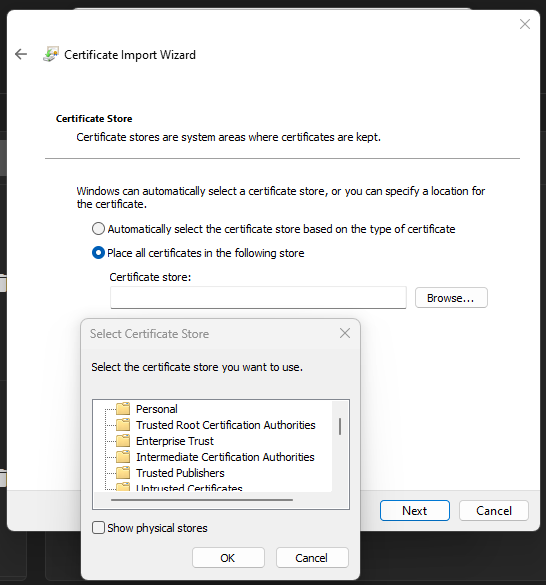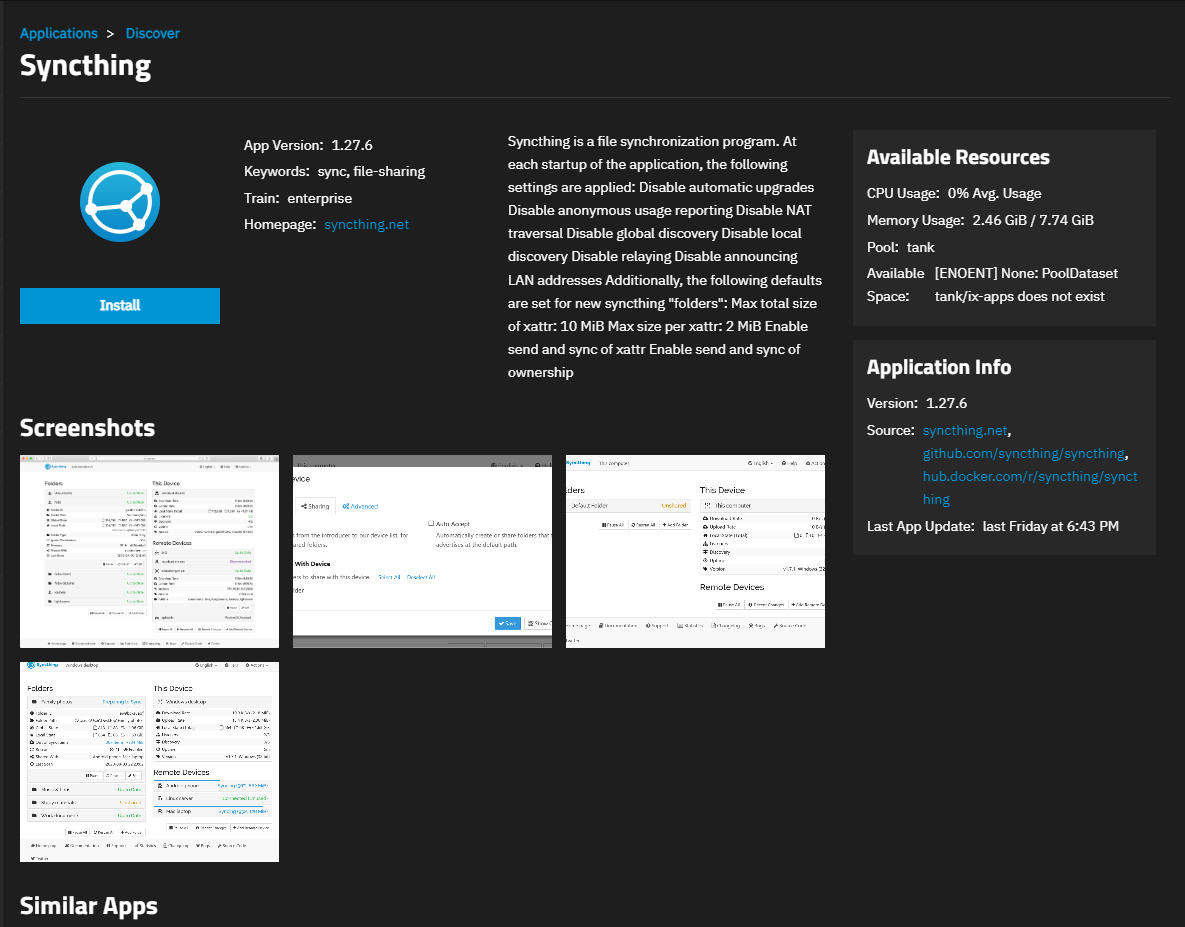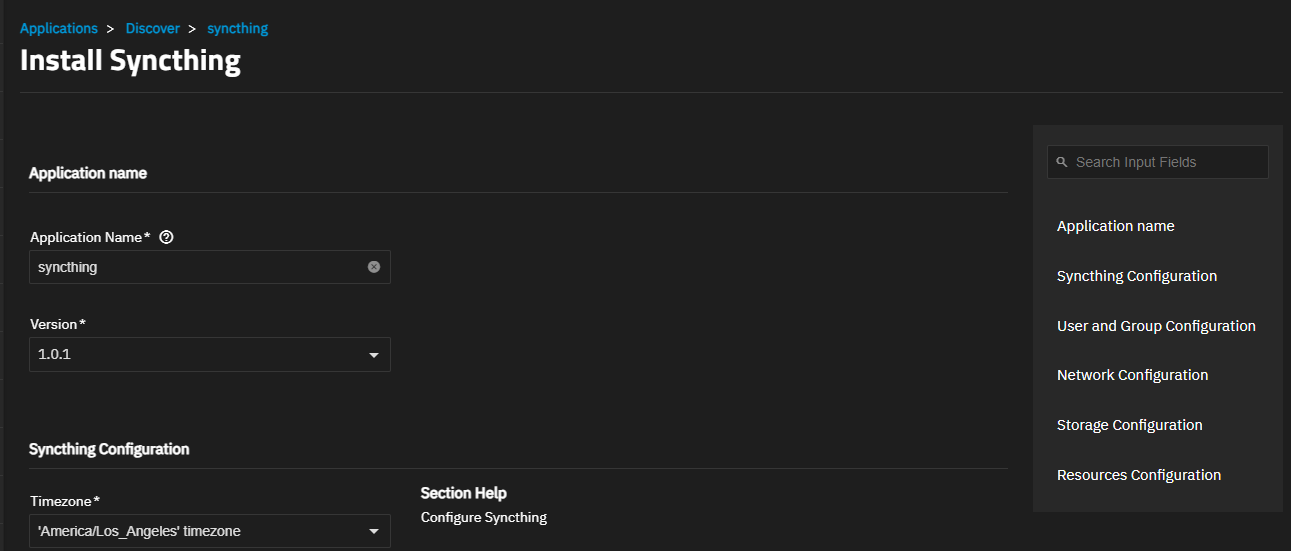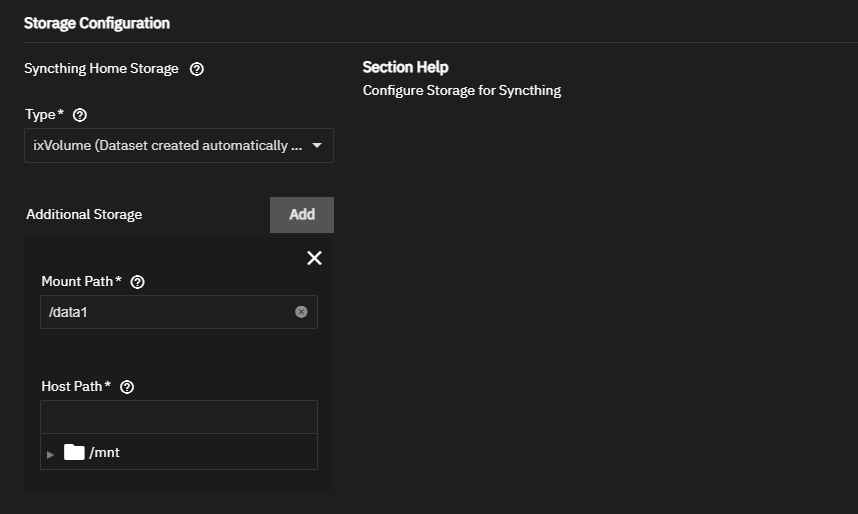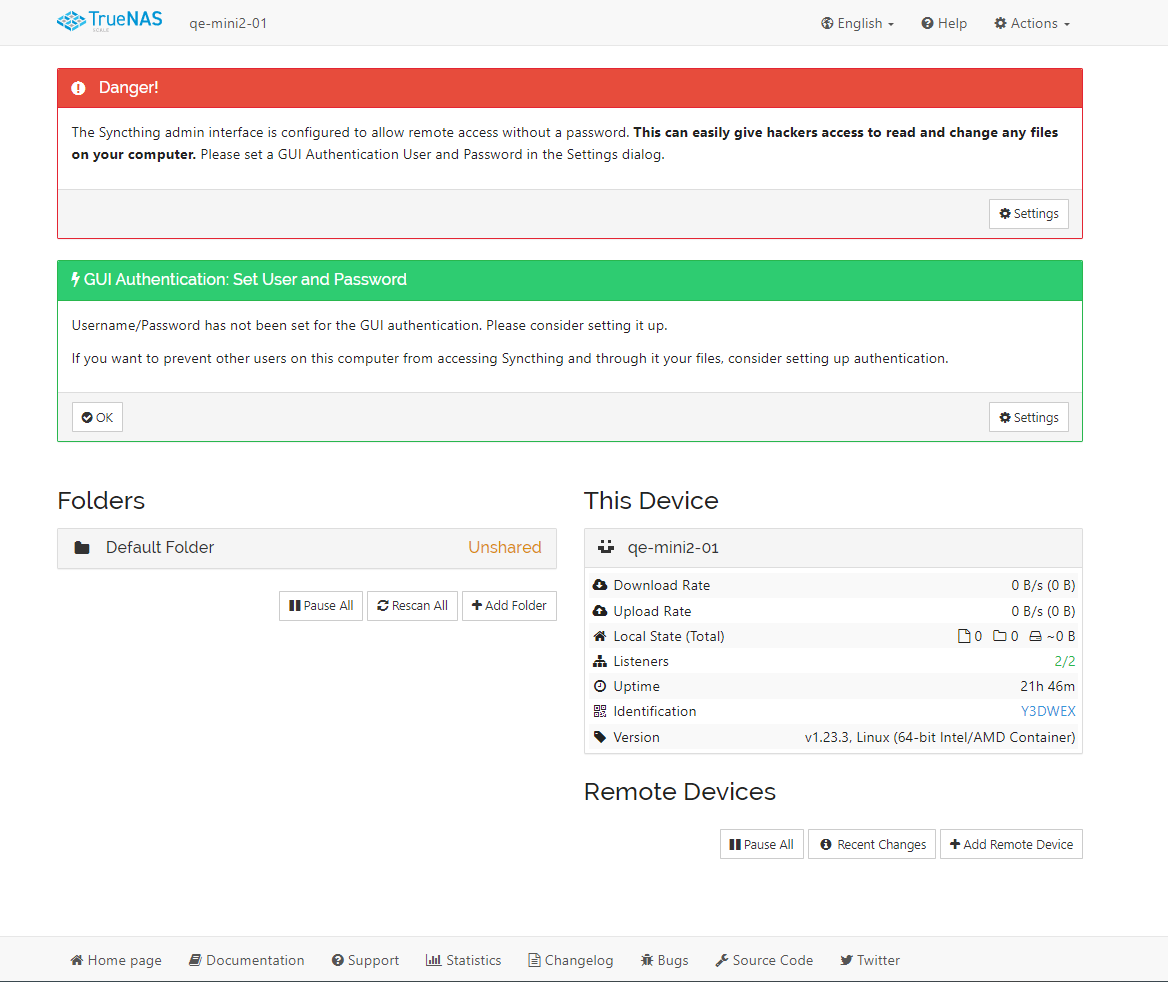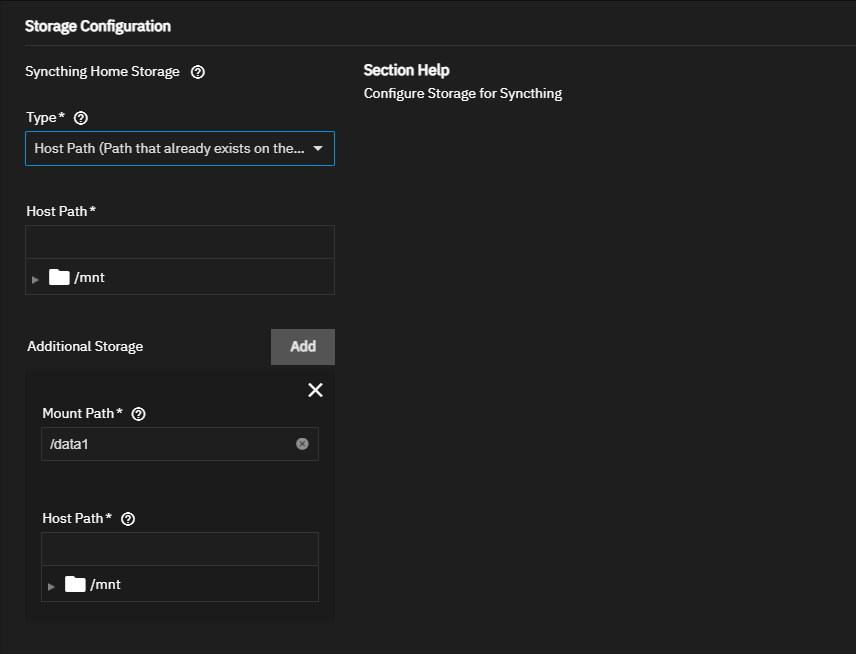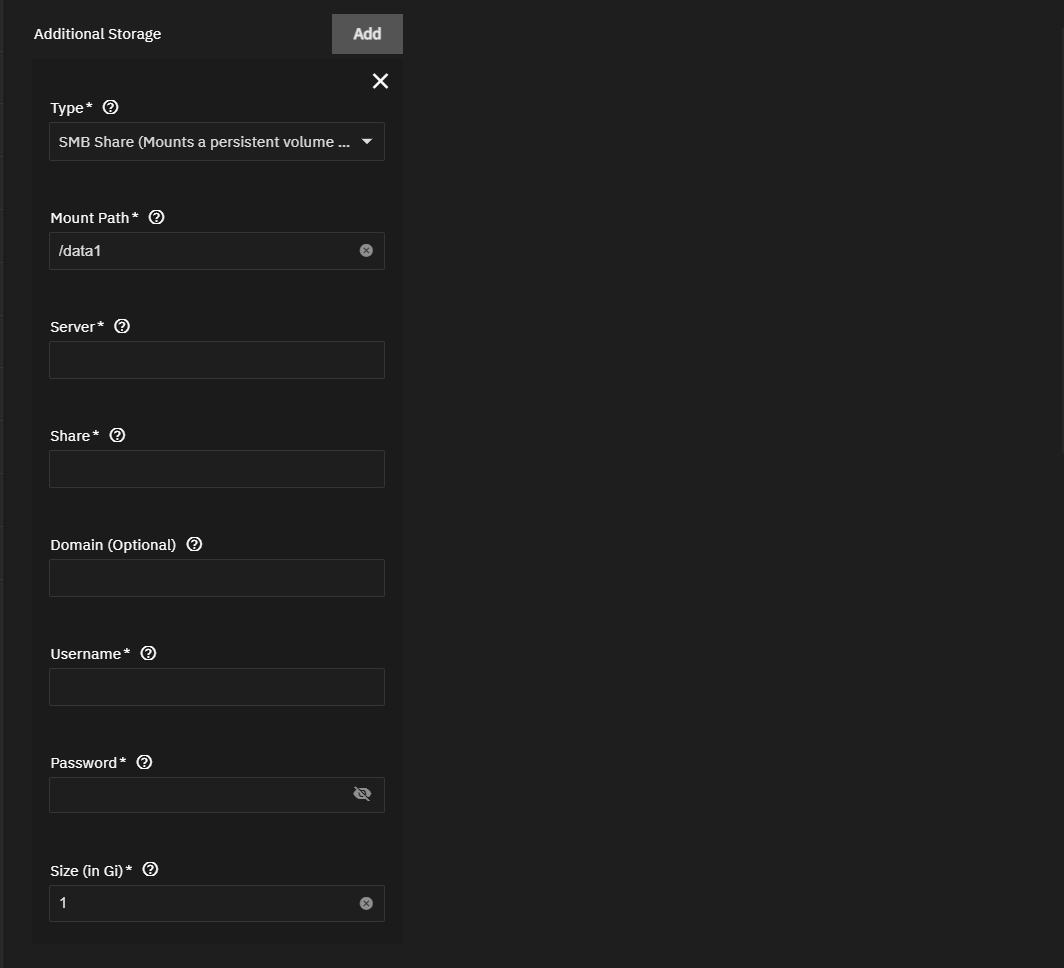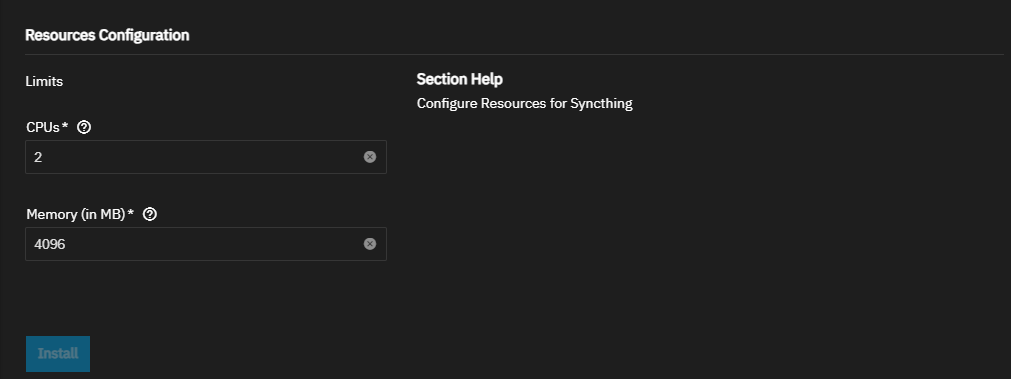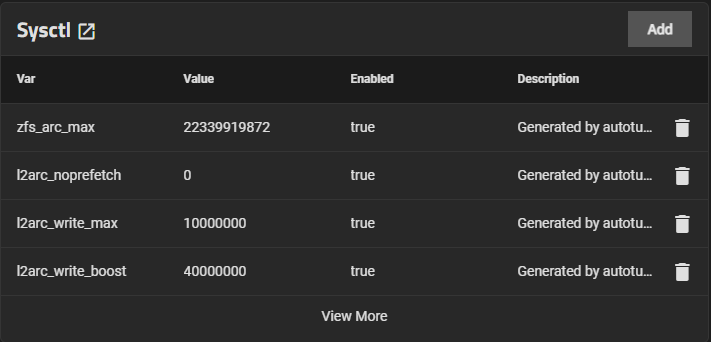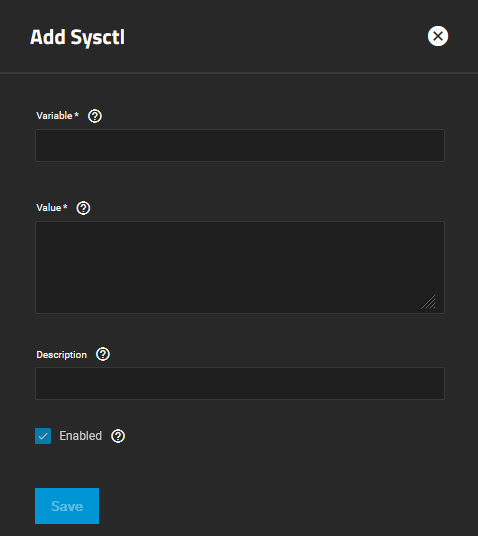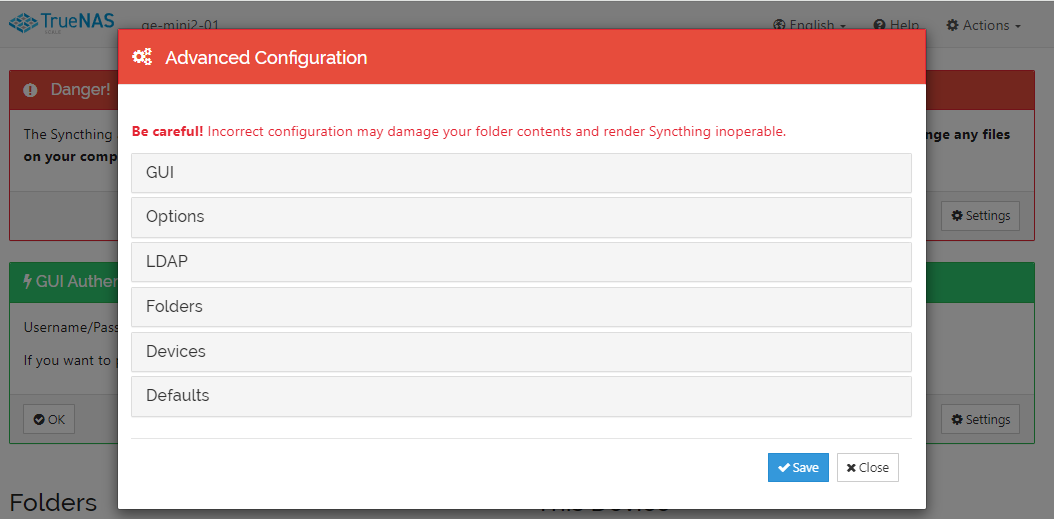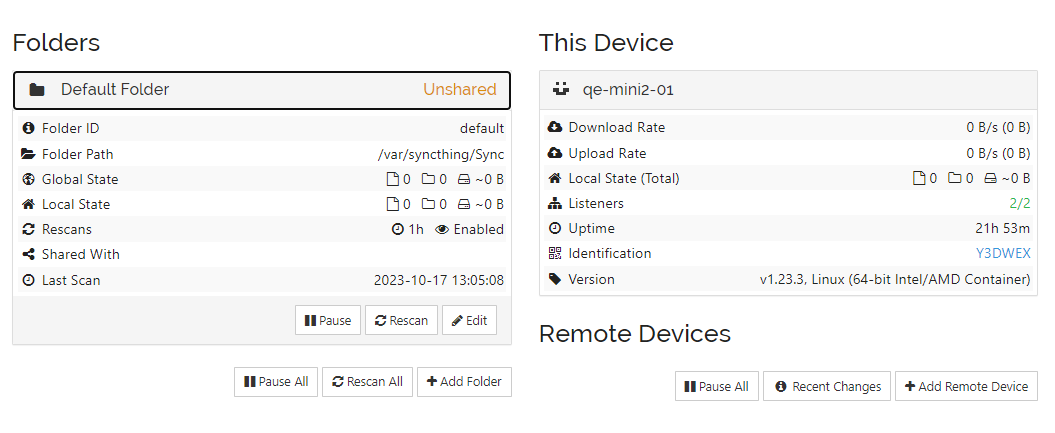TrueNAS SCALE Nightly Development Documentation
This content follows experimental early release software. Use the Product and Version selectors above to view content specific to a stable software release.
Syncthing Enterprise App
14 minute read.
Last Modified 2024-04-11 15:19 EDTThis article provides information on installing and using the TrueNAS Syncthing app.
SCALE has two versions of the Syncthing application, the community version in the charts train and a smaller version tested and polished for a safe and supportable experience for enterprise customers in the enterprise train. Community members can install either the enterprise or community version.
TrueNAS Enterprise
Syncthing is available to Enterprise systems with the appropriate VM and applications license.
Syncthing is a file synchronization application that provides a simple and secure environment for file sharing between different devices and locations. Use it to synchronize files between different departments, teams, or remote workers.
Syncthing is tested and validated to work in harmony with TrueNAS platforms and underlying technologies such as ZFS to offer a turnkey means of keeping data across many systems. It can seamlessly integrate with TrueNAS.
Syncthing does not use or need a central server or cloud storage. All data is encrypted and synchronized directly between devices to ensure files are protected from unauthorized access.
Syncthing is easy to use and configure. You can install on a wide range of operating systems, including Windows, MacOS, Linux, FreeBSD, iOS or Android. The Syncthing web UI provides users with easy management and configuration of the application software.
Users migrating data from an existing third-party NAS solution to TrueNAS SCALE 24.04 (Dragonfish) or newer can use the Syncthing Enterprise application to mount the source with a remote SMB share that preserves metadata.
See Third-Party SMB Data Migration for considerations and a full tutorial.
Create a self-signed certificate for the Syncthing enterprise app.
You can allow the app to create a storage volume(s) or use existing datasets created in SCALE. The TrueNAS Syncthing app requires a main configuration storage volume for application information. You can also mount existing datasets for storage volume inside the container pod.
If you want to use existing datasets for the main storage volume, [create any datasets]/scale/scaletutorials/datasets/datasetsscale/ before beginning the app installation process (for example, syncthing for the configuration storage volume). If also mounting storage volume inside the container, create a second dataset named data1. If mounting multiple storage volumes, create a dataset for each volume (for example, data2, data3, etc.).
You can have multiple Syncthing app deployments (two or more Charts, two or more Enterprise, or Charts and Enterprise trains, etc.). Each Syncthing app deployment requires a unique name that can include numbers and dashes or underscores (for example, syncthing2, syncthing-test, syncthing_1, etc.).
Use a consistent file-naming convention to avoid conflict situations where data does not or cannot synchronize because of file name conflicts. Path and file names in the Syncthing app are case sensitive. For example, a file named MyData.txt is not the same as mydata.txt file in Syncthing.
If not already assigned, set a pool for applications to use.
Either use the default user and group IDs or create the new user with Create New Primary Group selected. Make note of the UID/GID for the new user.
Go to Apps > Discover Apps, locate the Syncthing enterprise app widget.
Click on the widget to open the Syncthing details screen.
Click Install to open the Install Syncthing screen.
Application configuration settings are presented in several sections, each explained below. To find specific fields click in the Search Input Fields search field, scroll down to a particular section or click on the section heading on the navigation area in the upper-right corner.
Accept the default values in Application Name and Version.
Select the timezone where the TrueNAS server is located from the Timezone dropdown list.
Accept the default user and group ID settings. If selected, Host Network binds to the default host settings programmed for Syncthing. Accept the default web port 31000.
If changing ports, see Default Ports for a list of assigned port numbers.
Select the certificate created for Syncthing from the Certificates dropdown list.
Configure the storage settings. To allow Syncthing to create the configuration storage volume, leave Type set to ixVolume (Dataset created automatically by the system), then enter or browse to the location of the data1 dataset to populate the Host Path field under the Mount Path field.
To use an existing dataset created for Syncthing, select Host Path (Path that already exists on the system). Enter or browse to the dataset created to populate the Host Path field (for example, /mnt/tank/syncthing/config), then enter or browse to the location of the data1 dataset to populate the Host Path field under the Mount Path field.
To add another dataset path inside the container, see Storage Settings below for more information.
Click Install. The system opens the Installed Applications screen with the Syncthing app in the Deploying state. After installation completes the status changes to Running.
Click Web Portal on the Application Info widget to open the Syncthing web portal to begin configuring folders, devices, and other settings.
Secure Syncthing by setting up a username and password.
The following sections provide detailed explanations of the settings found in each section of the Install Syncthing screen for the Enterprise train app.
Accept the default value or enter a name in Application Name field. In most cases use the default name, but if adding a second deployment of the application you must change this name.
Accept the default version number in Version. When a new version becomes available, the application has an update badge. The Installed Applications screen shows the option to update applications.
Select the timezone where your TrueNAS SCALE system is located.
You can accept the defaults settings in User and Group Configuration, or enter new user and group IDs. The default value for User Id and Group ID is 568.
Accept the default port numbers in Web Port for Syncthing. The SCALE Syncthing chart app listens on port 31000. Before changing the default port and assigning a new port number, refer to the TrueNAS default port list for a list of assigned port numbers. To change the port numbers, enter a number within the range 9000-65535.
We recommend not selecting Host Network. This binds to the host network.
Select the self-signed certificate created in SCALE for Syncthing from the Certificate dropdown list. You can edit the certificate after deploying the application.
You can allow the Syncthing app to create the configuration storage volume or you can create datasets to use for the configuration storage volume and to use for storage within the container pod.
To allow the Syncthing app to create the configuration storage volume, leave Type set to ixVolume (Dataset created automatically…).
To use existing datasets, select Host Path (Path that already exist on the system) in Type to show the Host Path field, then enter or browse to and select the dataset an existing dataset created for the configuration storage volume.
If mounting a storage volume inside the container pod, enter or browse to the location of the data1 dataset to populate the Host Path field below the Mount Path populated with data1.
In addition to the data1 dataset, you can mount additional datasets to use as other storage volumes within the pod. Click Add to the right of Additional Storage to show another set of Mount Path and Host Path fields for each dataset to mount. Enter or browse to the dataset to populate the Host Path and Mount Path fields.
The TrueNAS SCALE Syncthing Enterprise app includes the option to mount an SMB share inside the container pod. This allows data synchronization between the share and the app.
The SMB share mount does not include ACL protections at this time. Permissions are currently limited to the permissions of the user that mounted the share. Alternate data streams (metadata), finder colors tags, previews, resource forks, and MacOS metadata is stripped from the share along with filesystem permissions, but this functionality is undergoing active development and implementation planned for a future TrueNAS SCALE release.
To mount an SMB share inside the Syncthing application, select SMB Share (Mounts a persistent volume claim to a system) in Type if not mounting a dataset in the container pod. If mounting a dataset inside the pod and to mount an SMB share, click Add to the right of Additional Storage to add a set of select settings then select the SMB share option.
Enter the server for the SMB share in Server, the name of the share in Share, then enter the username and password credentials for the SMB share Determine the total size of the SMB share to mount and access via TrueNAS SCALE and Syncthing, and enter this value in Size. You can edit the size after deploying the application if you need to increase the storage volume capacity for the share.
Accept the default values in Resources Configuration or enter new CPU and memory values. By default, this application is limited to use no more than 4 CPU cores and 8 Gigabytes available memory. The application might use considerably less system resources.
To customize the CPU and memory allocated to the container (pod) Syncthing uses, enter new CPU values as a plain integer value followed by the suffix m (milli). Default is 4000m.
Accept the default value 8Gb allocated memory or enter a new limit in bytes. Enter a plain integer followed by the measurement suffix, for example 129M or 123MiB.
Syncthing uses inotify to monitor filesystem events, with one inotify watcher per monitored directory. Linux defaults to a maximum of 8192 inotify watchers. Using the Syncthing Enterprise app to sync directories with greater than 8191 subdirectories (possibly lower if other services are also utilizing inotify) produces errors that prevent automatic monitoring of filesystem changes.
Increase inotify values to allow Syncthing to monitor all sync directories. Add a sysctl variable to ensure changes persist through reboot.
Go to System Settings > Advanced and locate the Sysctl widget.
Click Add to open the Add Sysctl screen.
Enter fs.inotify.max_user_watches in Variable.
Enter a Value larger than the number of directories monitored by Syncthing. There is a small memory impact for each inotify watcher of 1080 bytes, so it is best to start with a lower number, we suggest 204800, and increase if needed.
Enter a Description for the variable, such as Increase inotify limit.
Select Enabled and click Save.
After installing and starting the Syncthing application, launch the Syncthing webUI. Go to Actions > Settings and set a user password for the web UI.
The Syncthing web portal allows administrators to monitor and manage the synchronization process, view logs, and adjust settings.
Folders list configured sync folders, details on sync status and file count, capacity, etc. To change folder configuration settings, click on the folder.
This Device displays the current system IO status including transfer/receive rate, number of listeners, total uptime, sync state, and the device ID and version.
Actions displays a dropdown list of options. Click Advanced to access GUI, LDAP, folder, device, and other settings.
You can manage directional settings for sync configurations, security, encryption, and UI server settings through the Actions options.


